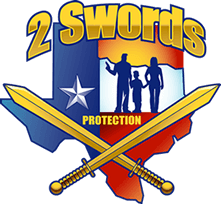Question: Where can't I carry my handgun in Texas?
You cannot carry a concealed firearm in any of the following places in Texas:
- Into a jail or a correctional facility
- Into a polling place on the day of an election or during early voting
- Into any government court or offices used by the court
- Into the secured section of an airport (i.e. past the metal detectors)
- Anywhere within 1000' of a place where an execution is scheduled to take place
- Inside a school building
- On any grounds or in any building where a school event is taking place
- In a school bus or other school transportation vehicle.
- At any type of school athletic event (elementary, secondary, post-secondary)
- At a racetrack (cars, horses, or dogs)
- In any facility belonging to the Federal government (e.g. you can carry into a national park in Texas, but you can't carry it into any building there, because the buildings would be Federal facilities) -- this includes the post office.
- Into the home or on to the property of anyone who verbally tells you that you cannot carry a concealed firearm there.
- Into Six Flags. Actually, the law says an "amusement park," but then defines an amusement park so that the only place that fits that definition is Six Flags. But you CAN carry into the State Fair of Texas if you declare that fact to security personnel in accordance with the instructions on the fair's web site.
- Inside any bar or restaurant that derives more than 51% of its revenue from the sale of alcoholic beverages. Any such place must display a sign like this:
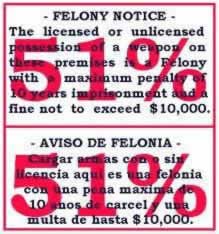
- You may not carry a concealed firearm into any place that displayes the 30.06 sign. In Texas, only the 30.06 sign constitutes effective legal written notice that you cannot carry concealed. A proper sign has this wording:
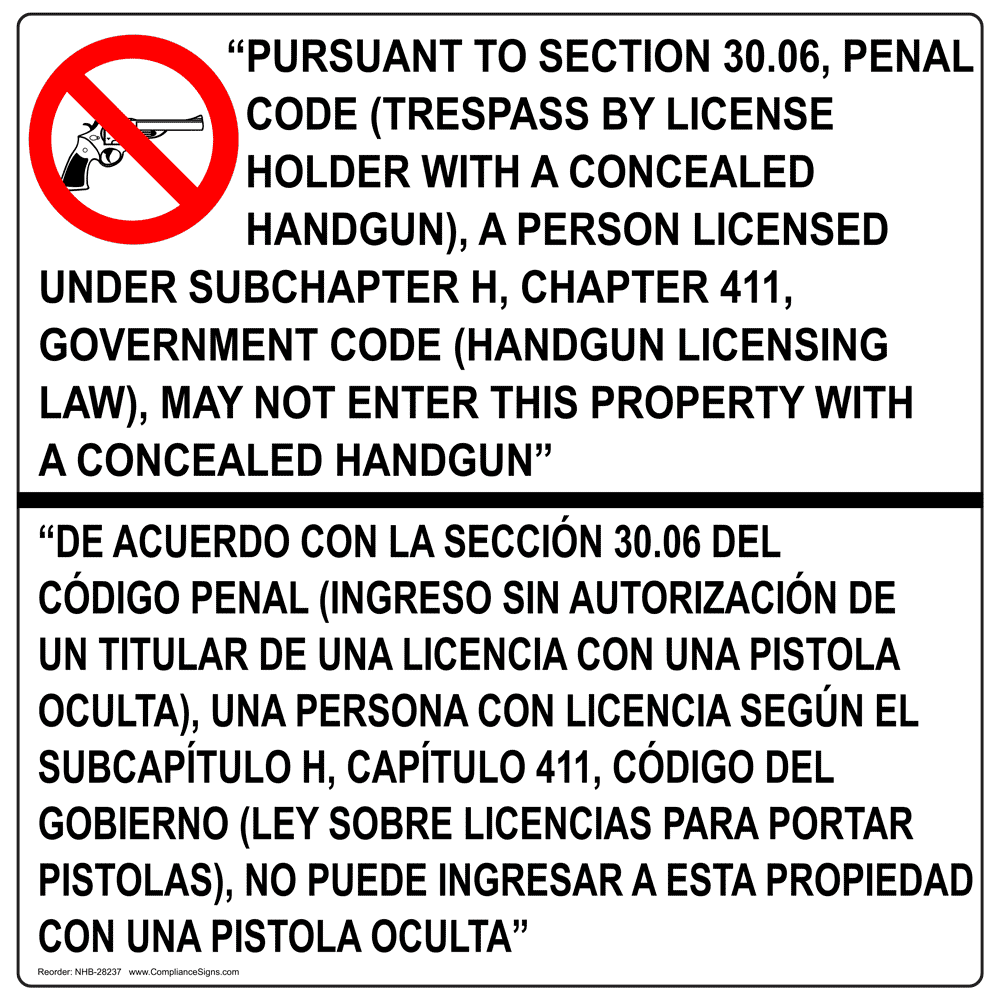
- The following signs look official but under Texas law, they do NOT constitute effective legal notice prohibiting conceal and carry because they have improper wording. Only the preceding sign citing section 30.06 of the Texas Penal Code is a valid written prohibition against carrying a firearm. If you see one of the following signs, you can choose to remove your firearm to comply if you wish. But these signs do not constitute a legal prohibition to carrying a concealed firearm. (However, if someone in authority in one of those places verbally tells you that you cannot carry there, you need to leave and secure your firearm elsewhere before re-entering.) Here are examples of invalid signs:
-
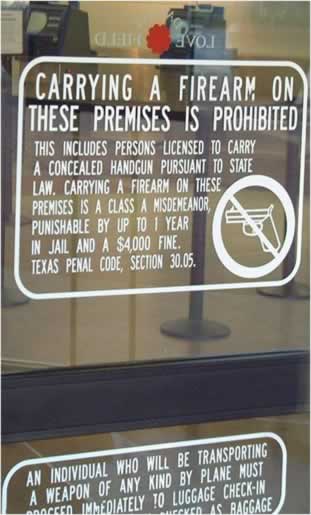
-
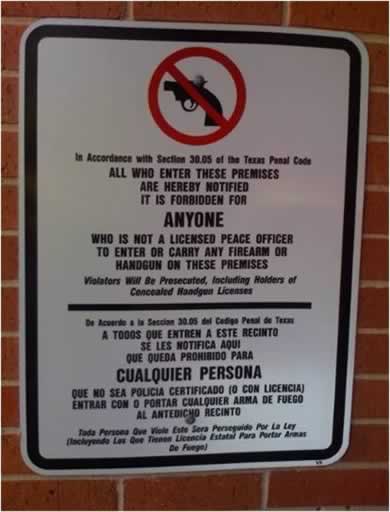
-
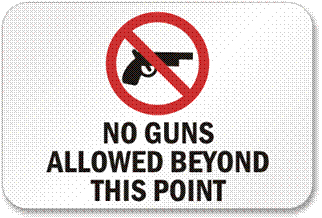
>
-
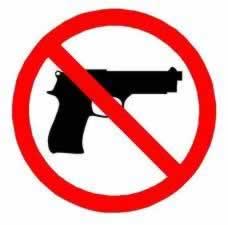
-
- You cannot openly carry a pistol into any place that displays the 30.07 sign (or where the management or owner verbally tells you that you cannot open carry).
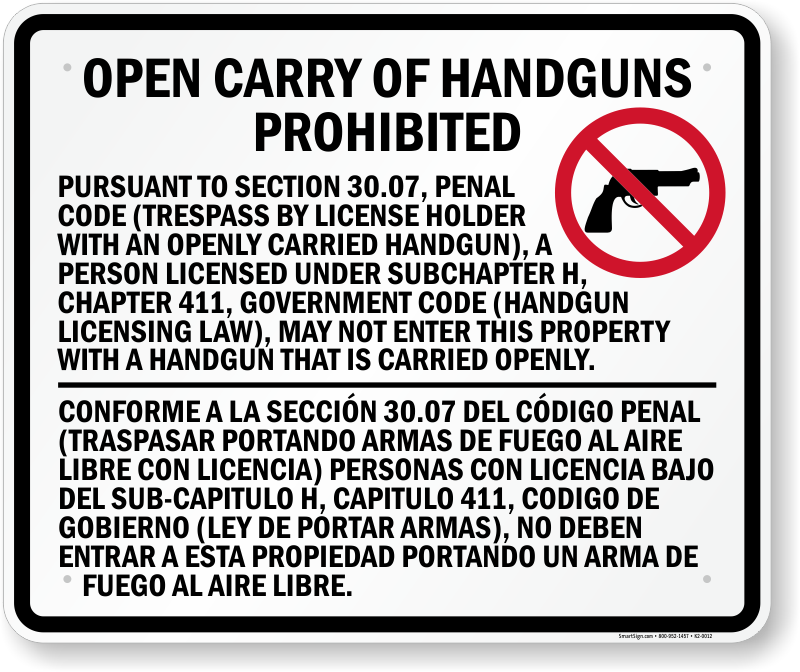
- Again, the law requires that a business or entity display the 30.07 sign in order to give "effective legal notice." So the following sign isn't really a legal notification. (However, you might want to consider concealing your firearm to avoid conflict.)
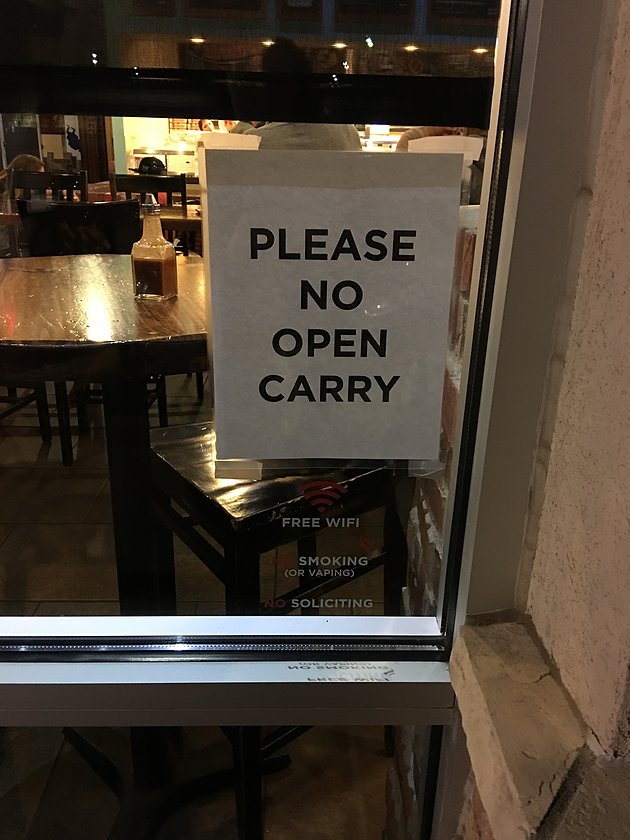
- Additionally, you should never carry a firearm if you are:
- Intoxicated
- Under the influence of medications -- whether prescription or over-the-counter that adversely affect your judgment and reason
- Enraged
- Extremely depressed or suicidal
- Incapable of exercising sound judgment
Question: What is the castle doctrine?
There is actually no portion of Texas law labeled the "Castle doctrine." However, this phrase comes from English law and the common idea that a "man's home is his castle." What does that mean in Texas?
Essentially, the law says that your home, automobile (self-propelled vehicle), your place of business or employment is your castle. In those locations, you can legally carry a firearm if:
- You have a right to be there
- You are not engaged in a criminal activity
- You have not provoked the person against whom lethal force is used
- You are not otherwise prohibited from having a firearm there (e.g. your employer can deny you the right to conceal and carry in your place of employment)
In Texas, you can use a firearm to protect yourself in your "castle" with no duty to retreat if the person against whom deadly force is used:
- Unlawfully entered or was attempting to enter your "castle"
- Was committing or attempting to commit a felony including the use of unlawful force, kidnapping, murder, sexual assault, or aggravated robbery (robbery involving the use of a firearm).
Please be aware that when carrying a firearm in your car, the firearm must be concealed. In other words, it cannot be plainly visible to anyone standing outside the car. If you put it on the passenger seat, it should be covered by a coat, newspaper, magazine, or something else. If it is somewhere else in the car, it must not be visible from outside the car.
